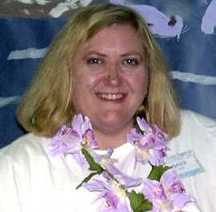 Barbara
Smith Barbara
Smith
Harvard Elementary
Houston, TX
E-mail
Barbara
Purchase from our Online Store: How
to Use the Internet in Your Classroom
Planning Your
Itinerary
Barbara Smith provides her rationale
for engaging students in the design of their own virtual field
trips:
As a teacher technologist, it is my job to come up with interesting, logical
methods for teaching my students the technology skills required by the
state curriculum. Rather than go down a checklist teaching each skill as
simply a task to be mastered and left behind, I much prefer teaching through
the use of integrated units. I began using virtual field trips as a way
to incorporate learning about copyright and legal issues related to electronic
information, and the use of interactive technology to manipulate information.
Here is the procedure this technology coordinator follows, over multiple
class sessions:
- Discuss field trips and family trips. Ask students their purpose,
what makes them interesting, and invite them to share photos and mementos.
- Introduce virtual field trips already online. Have students evaluate
the effectiveness of various trips, and identify the key elements of
a successful virtual experience.
- Assign field trip sites that correlate with your curriculum, or have
students choose their own, based on their interests.
- Guide students through searching the Internet, CD-ROMs, and other
resources to find information relevant to their trip. Introduce copyright
law and fair use exemptions, and teach citations for electronic sources.
- Direct students in writing an introduction containing a brief overview
of their trip.
- Teach the basics of web page authoring, if students will be creating
a web page. Alternatively, allow students to design their own documents
with a word processor or slides for a multimedia presentation.
- Demonstrate the procedure to capture, save, and insert graphics from
a variety of sources.
- Develop, with the students, a rubric for project evaluation.
- Present field trips and allow for discussion and evaluation.
- Publish field trips on the school web page for others to enjoy.
|